Residential school survivor Evelyn Korkmaz at the Mer Bleue bog in Ottawa on Aug. 9, 2019.Blair Gable/The Globe and Mail
In a time of national reckoning over Canada’s history of residential schools for Indigenous children, some truths have not yet come to light.
Catholic entities, which ran the majority of these schools, have still not shared historical records, estimated to be in the thousands, with the National Centre for Truth and Reconciliation (NCTR), despite years of efforts to obtain them and a long-standing obligation to provide them. These include codex historicus (records of daily life), correspondence and photographs, says Raymond Frogner, the centre’s head of archives.
These records are vital to understanding how the schools were run, who the children were, and why so many didn’t make it back home. They’re missing for many schools, including the Catholic-run Kamloops Indian Residential School, where the remains of 215 children were recently discovered, some as young as three years old, according to preliminary findings of a search with ground-penetrating radar announced by Tk’emlúps te Secwépemc First Nation.
‘There’s still so much work yet to be done,’ Chief of Tk’emlúps te Secwépemc says
Across Canada, the national centre has counted 4,117 children’s deaths at the schools, and estimates there are thousands more.
“That there are still church records that have not been revealed or made available to the national centre or to us at the [Truth and Reconciliation Commission] that related to this is ... a sad commentary on the lack of the commitment by the Catholic Church to allow us to investigate this further,” Murray Sinclair, former chair of the TRC, told a House of Commons committee this week.
The Catholic Church has yet to atone for the devastating legacy of residential schools. Unlike leaders in the Anglican and United churches, which also ran some of the schools, the Pope has never formally apologized for the harms these schools caused for generations. Catholic entities had a financial obligation to pay $25-million as part of the residential schools settlement for survivors’ healing and reconciliation programs, but they wound up raising just $3.7-million. And some organizations within the Catholic Church have failed to produce documents despite requests from Indigenous leaders and survivors.
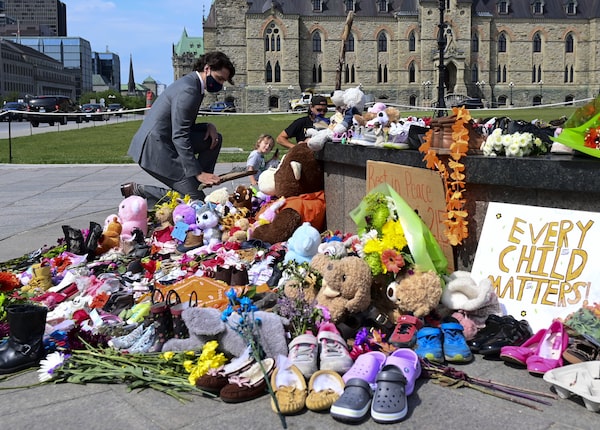
Prime Minister Justin Trudeau visits a memorial at the Eternal flame on Parliament Hill in Ottawa on June 1, 2021, set up in recognition of the discovery of children's remains at the site of a former residential school in Kamloops, B.C.Sean Kilpatrick/The Canadian Press
Prime Minister Justin Trudeau said on Friday that as a Catholic, he is disappointed that the church is still resistant to accepting its role in the residential schools legacy. He said the government hopes it will change its position.
“Truth is at the heart of understanding our past and preventing further damage in the future,” he said. “We need to have truth before we can talk about justice, healing and reconciliation.”
The TRC went to court several times trying to obtain records from Catholic and other entities. Some have still not been shared, said Mr. Frogner, who is based in Winnipeg. For example, records are still missing for St. Anne’s school in Fort Albany, Ont., where survivors have described whippings, beatings, widespread sexual abuse, and punishment by shocks delivered in an electric chair.
The federal government funded more than 130 residential schools, where an estimated 150,000 Indigenous children were taken from their families in a system designed to strip them of their language, culture and identity in efforts to assimilate them. The TRC has described the system as “cultural genocide.” The last one closed in 1996.
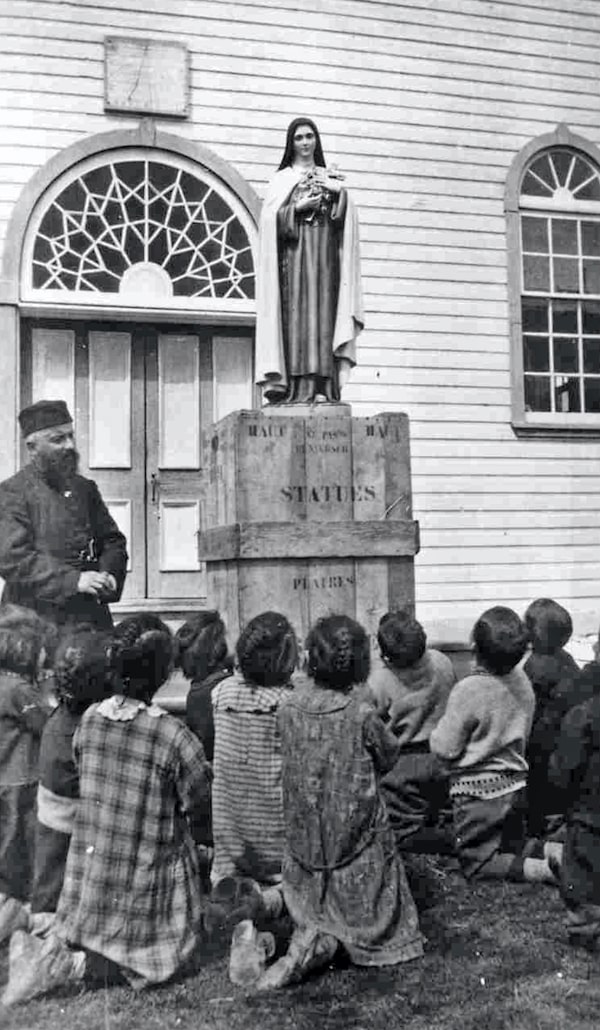
Children praying to a newly arrived French statue of Ste. Therese de l'Enfant Jesus at Holy Angels Boarding School, Fort Chipewyan, Alberta in June, 1931.University of Saskatchewan Archives
Records for Kamloops, one of Canada’s largest residential schools, are also missing. The national centre has still not received school narratives (historical records that detail activities and students at the schools) for Kamloops and about five others, he said. As well, daily records are also still missing.
On Friday, the head of the B.C. First Nation that announced the discovery of the unmarked graves, Kukpi7 (Chief) Rosanne Casimir, said her community recently met with the local Catholic bishop, but still wants a public apology from the Vatican. She said the missionary order that ran the school has kept its internal records secret, adding that the deaths of the students whose remains were found appear to be undocumented and the graves unmarked.
“We do want an apology – a public apology – not just for us, but for the world,” Kukpi7 Casimir told reporters. “[We are] holding the Catholic Church to account – there has never been an apology from the Roman Catholics.”
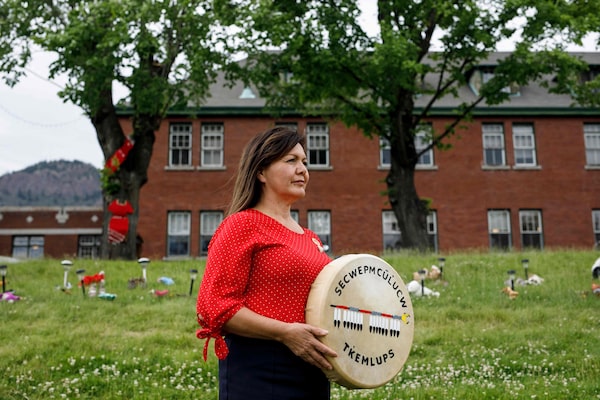
Chief Rosanne Casimir of the Tkemlups te Secwepemc First Nation at the site of the former Kamloops Indian Residential School in Kamloops, B.C. on June 4, 2021.COLE BURSTON/AFP/Getty Images
The Catholic Church ran about 60 per cent of residential schools in Canada. It operated the Kamloops Indian Residential School from 1890 to 1969, mostly under a Catholic order called the Oblates of Mary Immaculate.
In an interview, Ken Thorson, leader of the religious order, which ran about 43 of the schools, acknowledged that, regarding the codex historicus records, which are in Oblate and museum archives, “we have not hidden them – but they have not been as available as they could be.” He pledged to make them available to the NCTR, and pay for the cost of digitalizing them.
Ry Moran, who spent years gathering millions of documents for the TRC, said there were “significant challenges encountered over accessing these records” from Catholic entities, such as chronicles kept by nuns.
The commission sought to collect all records related to residential schools. After initial difficulties, some entities were very forthcoming, he said – the Anglican and United churches, and some Catholic orders, such as the Jesuits. Other Catholic entities were uncooperative.
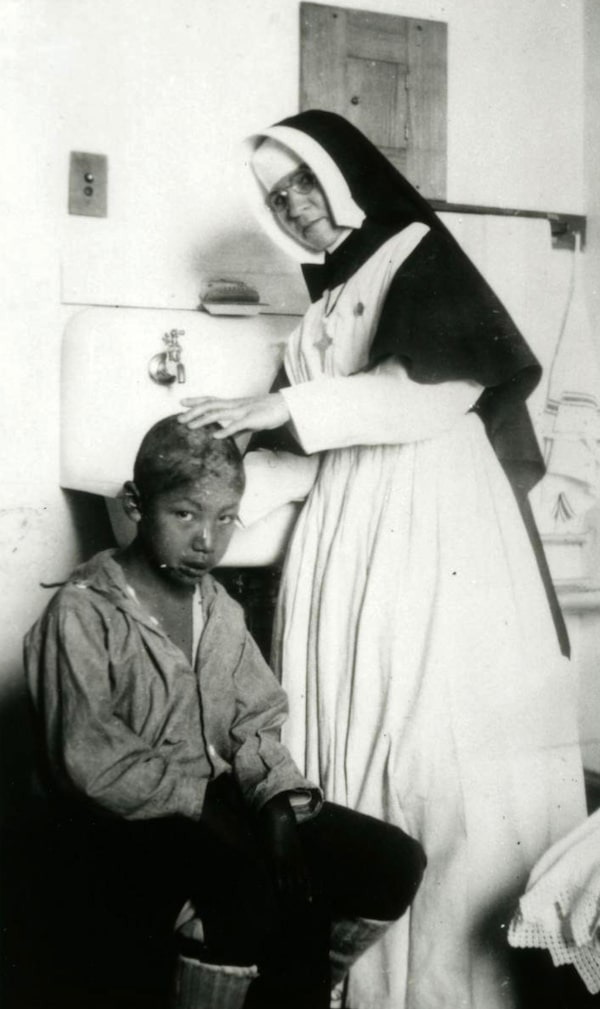
A Roman Catholic nun washes the hair of a male student at Guy Hill Residential School, 1926.Provincial Archives of Saskatchewan
He said that in his years of work, he encountered obfuscation, debates over semantics, unwillingness to help in the digitalization process, debate over what was considered relevant, and sometimes outright resistance. “Catholic entities were one of the few entities that routinely appeared with their legal counsel” at meetings, he said.
“We were only given certain pieces of these records…rather than just producing the entire document. We felt that wasn’t really in the spirit of what the settlement agreement was trying to do,” which was to create as complete a historical record as possible, said Mr. Moran, who is Métis, was the founding director of the NCTR and is now associate university librarian -- reconciliation at the University of Victoria.
Perry Bellegarde, the National Chief of the Assembly of First Nations, agrees. “Make all documentation and records available in terms of any kind of research or investigation,” he said in an interview this week. “That information can help determine the who, what, where, when, and why to these young First Nations lives being stolen.
“These young First Nations people buried in unmarked graves, there could be some very important information for families that need closure, to know where their loved one lies buried.”
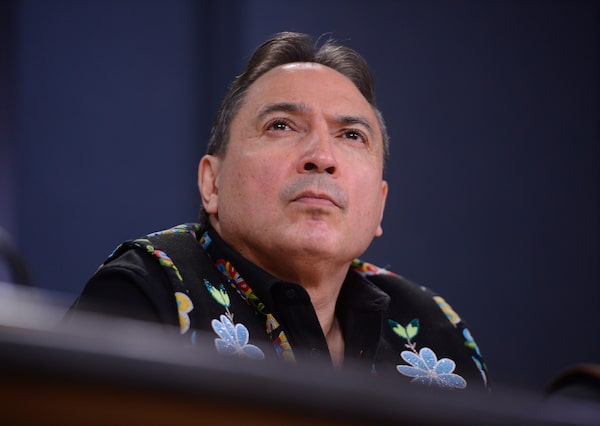
Assembly of First Nations National Chief Perry Bellegarde at a press conference at the National Press Theatre in Ottawa on Feb. 18, 2020.Sean Kilpatrick/The Canadian Press
The National Centre for Truth and Reconciliation works to preserve the stories and memories of residential school survivors, and record the legacy of human rights abuses at the schools. It was created as part of the mandate of the TRC, which had found thousands of children died of tuberculosis, influenza, injuries after abuse, neglect, malnourishment, in fires and accidents, and after running away.
The Globe and Mail reached out to the Canadian Conference of Catholic Bishops (CCCB) repeatedly this week to ask for an interview with its leader, Archbishop Richard Gagnon. The CCCB said he was not able to participate. It did not respond to questions about schools and further actions it might take. The Globe received no reply from the Vatican’s Holy See press office to questions about an apology and a request for a response to news of the Kamloops discovery. The Globe asked three bishops in Canada for comment – Michael Miller in Vancouver, Joseph Nguyen in Kamloops, and Paul-André Durocher in Gatineau, Que. – and was not granted interviews.
Terrence Prendergast, the administrator-bishop for the Diocese of Hearst-Moosonee in Ontario, where St. Anne’s was located, said that, to his knowledge, documents have been available. “There are no reasons why we would withhold anything that would help clarify things and give the truth. There’s no secret archives,” he said, adding that he is in favour of an apology from the Pope.
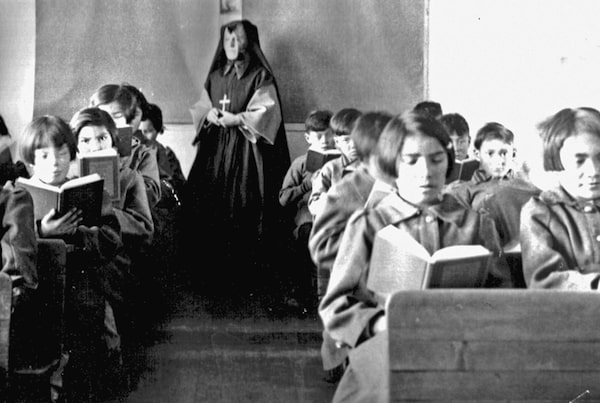
A group of students reading in a classroom at St. Anne's Indian Residential School in Fort Albany, Ont., in 1945.Algoma University/Edmund Metatawabin Collection
In a statement on Wednesday, Archbishop Miller said Vancouver’s archdiocese “will be fully transparent” with its archives and records regarding residential schools. He urged all other Catholic and government organizations to do the same.
The Catholic Church’s structure is decentralized in Canada, with the dioceses operating as autonomous entities, each governed by a bishop. That has made gathering documents more difficult, Mr. Moran said. “We were dealing with 51 separate entities that had records scattered across the country. And we had to deal with them by and large individually.”
In a statement this week, the CCCB said it will walk “side by side” with Indigenous peoples. “Honouring the dignity of the lost little ones demands that the truth be brought to light,” said Archbishop Gagnon of Winnipeg.
That is not enough for Evelyn Korkmaz. As a residential school survivor, she has spent years calling for more transparency and accountability from the church over its handing of child abuse, and said she believes the church has lost its moral compass.
Evelyn Korkmaz, who is Cree, was at St. Anne’s for four years, and experienced mental, physical and sexual abuse.Blair Gable/The Globe and Mail
Ms. Korkmaz, who is Cree, was at St. Anne’s for four years, and experienced mental, physical and sexual abuse. In 2019, she travelled to Rome, hoping to meet Pope Francis and ask him to apologize for the church’s role in the schools – a message that is also among the 94 calls to action in the TRC’s final report. A meeting was refused, and she left hugely disappointed.
Mr. Trudeau made a personal appeal to the Pope for an apology in 2017. The next year, the Canadian bishops said the Pope would not apologize. In 2018, the House of Commons voted overwhelmingly to ask the Pope for a formal apology. Although some Catholic religious orders and diocesan bishops have apologized, the Pope, as head of the church, has not, in contrast to leaders of the Anglican, United and Presbyterian churches, which also operated some of the schools.
Ms. Korkmaz still wants a papal apology, and for the Catholic Church to pay for healing programs for residential school survivors. She’s calling for the church to meet its financial obligations, and for the Vatican to ensure all residential school documents are released.
The Kuper Island Indian Residential School on Penelakut Island, B.C., on June 19, 1941.Supplied/Library and Archives Canada via Reuters
The Truth and Reconciliation Commission asked churches and others to work together to create online registries of residential school cemeteries and to inform the families of children who died at residential schools of their burial location. These calls “have to be taken with the utmost seriousness, wherein if entities have not produced their records, they need to,” Mr. Moran said. “If there are things that were hidden, and we never knew about – which is quite possibly the case – that needs to be produced. We need to ensure that there is no stone left unturned, because those children deserve to be found, and remembered, and commemorated.”
The number for the National Indian Residential School Crisis Line is 1-866-925-4419. British Columbia has a First Nations and Indigenous Crisis Line offered through the KUU-US Crisis Line Society, toll-free at 1-800-588-8717.
With reports from Marieke Walsh and Kristy Kirkup in Ottawa, Stephanie Chambers in Toronto and Mike Hager in Vancouver
Our Morning Update and Evening Update newsletters are written by Globe editors, giving you a concise summary of the day’s most important headlines. Sign up today.